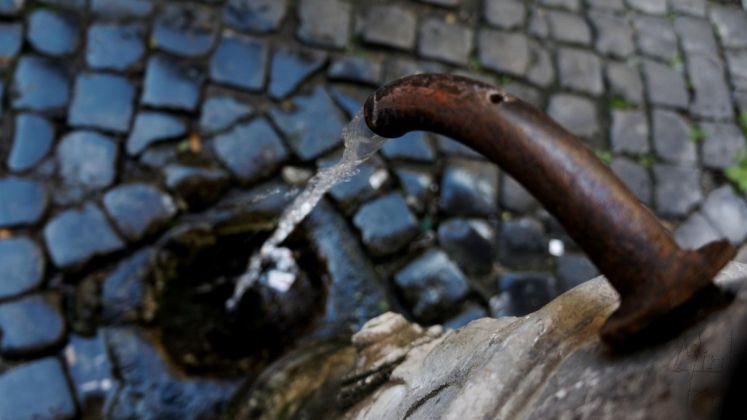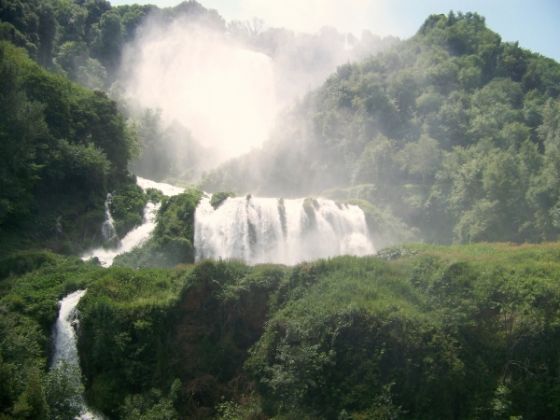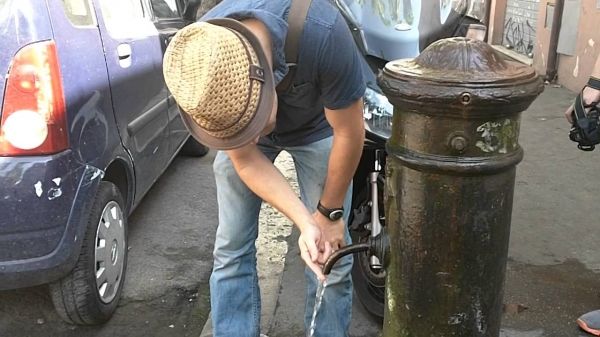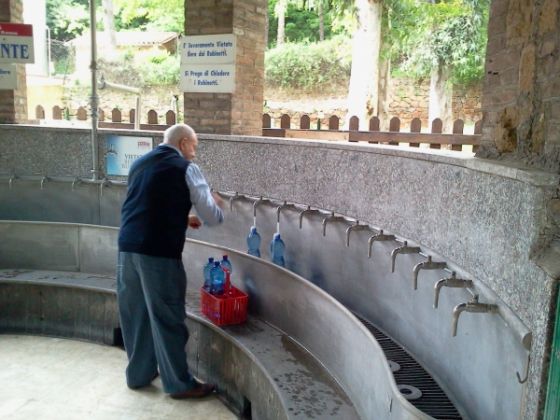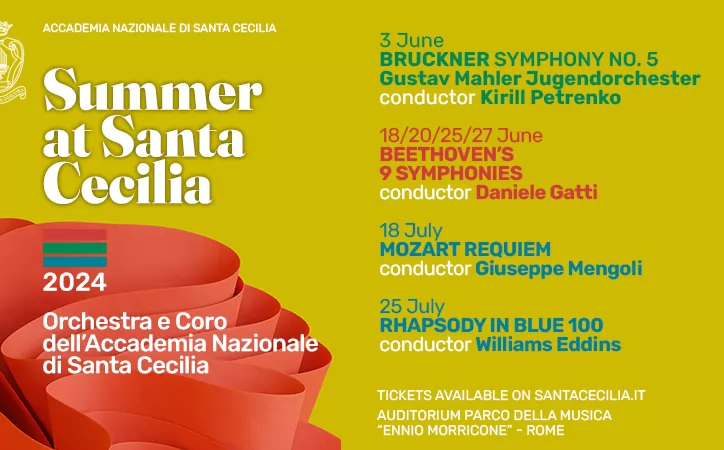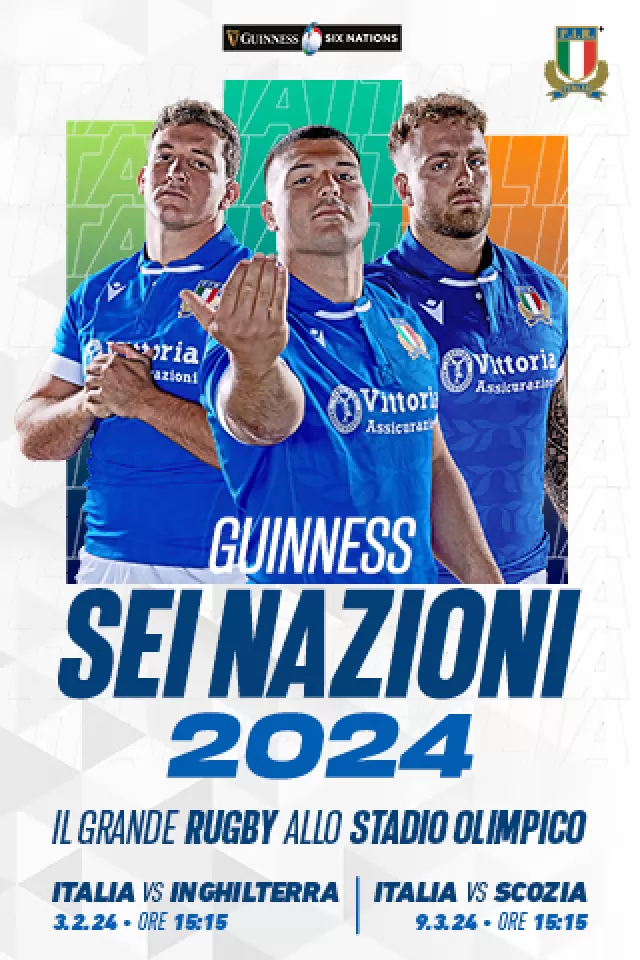Rome's tap water
Bottled water in Italy is big business but there is nothing wrong with Rome’s tap water
While sitting down at a local trattoria in the charming Trastevere neighbourhood on a hot summer day, I ordered a bottle of local Frascati wine to accompany my food. But to quench my thirst after a long day touring I also asked for a carafe of Rome’s fine water, from the tap. Water from the tap in Rome is affectionately known by locals as l'acqua del sindaco (the mayor’s water). The waiter however immediately replied, “The water from the tap is not good.”
My dining companion, who was born and raised in Rome and has drunk tap water all his life, responded in his thick Roman accent, demanding tap water. His insistence on drinking the “mayor’s water” was not for economic reasons, but rather his environmental concern and belief that the price he pays for a bottle of water is a serious cost to the environment and one that provides great economic benefits to the industries behind the packaging (glass and plastic), transport and sale of mineral water. He points out that when you buy a bottle of mineral water you are paying for the energy involved in producing and packing the bottles, transporting them and refrigerating them, while Rome’s tap water is healthy and safe.
One of the industries behind the promotion of mineral water however is in fact the restaurants. By law, restaurants must have running tap water otherwise they could be shut down by the health department, and by law, the restaurant is obliged to serve tap water if you ask for it. But at a profit of more than 300 per cent per bottle, many restaurants don’t willingly serve tap water. Most restaurants buy bottled mineral water in bulk, in cases of 12 bottles, at an average price of 60 cent per one-litre bottle. The price they charge consumers is between €2 and €4 per one-litre bottle.
A representative from the historic Roberto e Loretta restaurant in the S. Giovanni district claimed that while the restaurant does serve tap water if customers ask, the local and esteemed clientele wouldn’t be so bold as to do so. “It is not part of our culture to drink tap water in a restaurant, even if we drink it at home,” he said. This unfortunately exemplifies Italians’ concern for image over that for the environment.
Another Italian resident in Rome, Massimo Betello, said that the habit of drinking bottled water has a lot to do with the bella figura. “When you go out to eat with friends or on a romantic date, you are supposed to be relaxed and not showing a concern for money or an unusual attitude toward water. Thus the consumption of bottled water has a lot to do with behaviour dictated by social pressure.” Betello however is an environmentalist and prefers tap water to bottled water because he doesn’t like the waste of plastic bottles and the pollution involved with the transportation of the bottles. In fact, 85 per cent of bottled water is transported by truck, meaning that water coming from the Alps travels 1,000 km to reach Puglia.
Even when water is sold in glass bottles, the impact on the environment is almost as dire: glass requires huge amounts of energy to produce, and the extra weight impacts heavily on transport (and therefore fuel) costs.
The two aforementioned Rome residents are not the only ones supporting the idea that bottled mineral water is bad for the environment. In honour of World Water Day, coordinated by UNESCO and celebrated annually on 22 March, two environmental agencies, Legambiente and Altreconomia, teamed up to write a dossier explaining the environmental damages of excessive consumption of bottled water while promoting an awareness campaign called “Imbrocchiamola”, stating that tap water is good, cheap, controlled, and does not pollute.
According to their report, the bottled water industry in Italy is worth €2.25 billion and involves 169 companies with 304 different commercial brands. The report further states that bottled water companies produce more than six billion plastic bottles, using 456,000 tons of oil and producing 1.2 million tons of carbon dioxide emissions. This means that bottled water generates an economic mechanism that yields large profits for the bottling companies, leads to enormous consumption of resources for the country, and generates pollution and waste.
At least one enterprising brand is advertising “0 km” water, meaning that although it still needs bottling, at least it is not trucked in from distant springs.
Recent statistics show that Italians are the largest consumers of bottled water in Europe. Perhaps it is the taste for the bubbles that makes Italians prefer bottled to tap. Luckily for Rome residents, fizzy water or acqua frizzante can be enjoyed directly from the spring at the Appia Antica Park. The Egeria spring is open to the public as part of an environmental campaign called “0 km”, designed to promote local resources. At the park, residents and tourists can fill bottles and tanks directly from the spring at a modest cost of 8 cents per litre, choosing between naturally effervescent, sparkling and light water. The park is open Mon-08.00-19.00, and Sat-Sun 08.00-18.30.
Several villages around the country have also set up free public taps for both still and fizzy water, in a campaign to reduce the number of plastic (or glass) bottles finishing up in the municipal waste collection.
Not to be ignored are the famous nasoni or drinking fountains that are ubiquitous in the city centre. There are 280 of these fountains around downtown Rome, celebrating the city’s ancient water legacy and providing water from various springs such as around the Aniene valley and Tivoli. More than half of the tap water in Rome comes from the Peschiera and Capore springs in the Velino river valley in the province of Rieti, where it is then mixed in a hydraulic plant in Salisano.
Water is a theme throughout Roman history as the city has been renowned for its hydraulic engineering for over 2,000 years. The ancient Roman aqueducts, engineering masterpieces whose remains can still be seen around the city, supplied an abundance of fresh water to over a million residents in the empire’s capital. The renaissance and baroque periods in Rome were defined by the construction of monumental decorative fountains celebrating numerous pure water sources that are still admired by tourists and locals alike. It is a wonder then that Italians are so keen on their bottled water, a business yielding tempting profits for bottling companies when there is so much excellent water free out of the tap.
By Theresa Potenza
There are three types of bottled water: naturale (or liscia), leggermente frizzante (often referred to just as leggermente) and frizzante.
A few of the brand names in Italy are:
Acqua Panna, which is still, and claims to be good for babies and the old.
Ferrarelle, which the advertising tells us is leggermente frizzante.
Acqua di Nepi which comes from springs outside Nepi north of Rome.
S. Pellegrino (responsible for Acqua Panna and other bottled drinks as well).
Almost every village has its own source of natural water, which provides the mains water supply through the aqueduct and is almost always available at drinking fountains throughout the village.
For more information see also an article published in Wanted in Rome in July 2010 just before the referendum on the liberalisation of water resources in Italy.
This article was originally published in the September 2013 edition of Wanted in Rome magazine.



